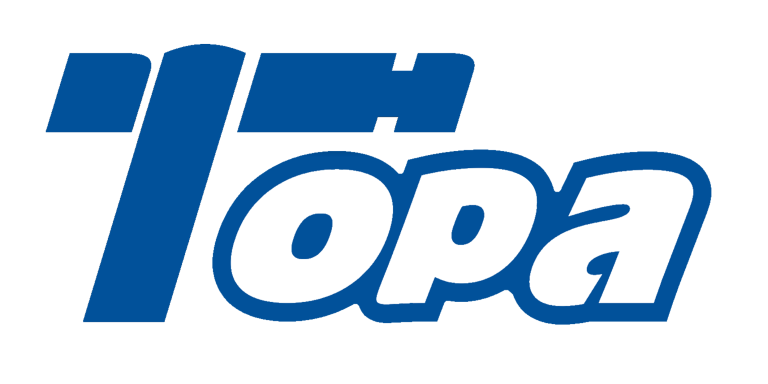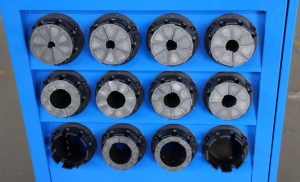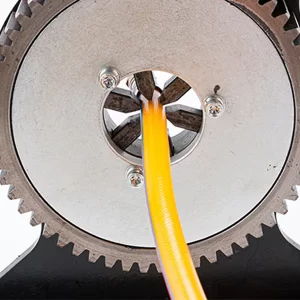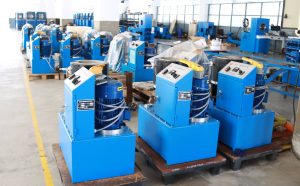Upgrading your hydraulic hose crimper is a significant decision that can impact your business operations, efficiency, and costs. This article, “What Should You Consider When Upgrading Your Hydraulic Hose Crimper?” delves into the essential factors businesses must evaluate before making this investment. Understanding these considerations helps ensure you choose the right equipment to meet your current and future needs while optimizing performance and safety. But here’s the kicker: upgrading without proper planning can lead to unnecessary expenses and operational disruptions. This comprehensive guide covers everything from assessing your current machine’s condition to budgeting, technology integration, and workforce training, providing you with actionable insights for a successful upgrade.
1. What are the primary reasons to upgrade a hydraulic hose crimper?
Businesses often face several compelling reasons to upgrade their hydraulic hose crimper. What’s the real story? Aging equipment may suffer from increased breakdowns, leading to higher maintenance costs and unexpected downtime. Upgrading introduces modern technology that enhances precision, safety, and speed, directly impacting productivity. For example, a manufacturing firm reported a 30% increase in output after switching to an automated crimper with programmable settings. Additionally, safety regulations may require newer machines to comply with stricter standards, prompting upgrades. Companies also upgrade to accommodate changing hose sizes or materials. A construction company needed a crimper capable of handling new high-pressure hoses that their old manual machine could not support. Another example is the integration of digital diagnostics, which allows predictive maintenance to prevent failures.
| Reason for Upgrade | Impact | Example |
|---|---|---|
| Aging Equipment | Frequent breakdowns | Increased maintenance costs |
| Technology Advancements | Improved precision and speed | 30% output increase |
| Regulatory Compliance | Enhanced safety standards | Compliance with new laws |
| New Hose Requirements | Larger or different hoses | Supporting new material types |
2. How do you assess your current hydraulic hose crimper’s condition?
Evaluating your existing hydraulic hose crimper is crucial before deciding on an upgrade. This is where it gets interesting: start by analyzing performance metrics such as crimp consistency, cycle times, and failure rates. A company tracked repair logs over 12 months, finding their machine failed 10% more frequently compared to industry averages. Maintenance costs are another indicator; rising expenses often signal the end of a machine’s efficient life. Inspections should also check for wear in dies, hydraulic seals, and electronics. User feedback on ease of operation and safety concerns should be factored in. For instance, an operator survey revealed difficulties with the manual crimper’s ergonomics and controls, motivating management to explore alternatives. Comparing your machine’s capabilities with current production needs and technology can highlight gaps. One firm realized their old crimper could not support the required hose diameters, justifying an upgrade.
| Assessment Factor | Indicator | Method |
|---|---|---|
| Performance Consistency | Increased defects | Quality control data |
| Maintenance Costs | Rising expenses | Repair and service records |
| Physical Wear | Worn parts and leaks | Visual inspections |
| Operator Feedback | Usability and safety issues | Surveys and interviews |
3. What factors influence the choice of a new hydraulic hose crimper?
Choosing a new crimper requires balancing technical needs with financial realities. Ready for the good part? Key factors include the types and sizes of hoses you work with, required crimping pressure, and production volume. Compatibility ensures you don’t overspend on unnecessary capabilities or miss needed features. Budget constraints play a significant role; while automated models offer efficiency, manual or semi-automatic machines may better fit limited budgets. Companies also consider return on investment (ROI) by projecting productivity gains and maintenance savings. For example, a logistics company prioritized fast cycle times and chose a semi-automatic crimper to balance cost and throughput. Brand reputation and after-sales support also influence choices. A manufacturer with strong local support often offers faster repairs and easier parts sourcing.
| Factor | Importance | Example |
|---|---|---|
| Hose Compatibility | Ensures machine usability | Support for specific hose sizes |
| Production Volume | Matches output needs | Manual vs. automated choice |
| Budget | Aligns with financial plans | Semi-automatic for cost control |
| Vendor Support | Affects downtime and service | Preference for reliable brands |
4. How important is automation when upgrading your crimper?
Automation in hydraulic hose crimpers can revolutionize your operations by increasing speed, precision, and consistency. But here’s the kicker: automated machines reduce human error and operator fatigue, leading to higher quality crimps and fewer rejects. A factory that upgraded from manual to fully automatic crimpers saw a 40% reduction in defective crimps and a 25% boost in throughput. Semi-automatic machines offer a middle ground, providing some automation benefits at lower costs. However, initial investment and maintenance complexity rise with automation levels. It’s vital to consider your production volume, budget, and workforce skills when deciding on automation. Companies with high-volume production or strict quality requirements benefit most from automation, while smaller shops may find manual machines sufficient.
| Automation Level | Benefits | Suitable For |
|---|---|---|
| Manual | Low cost, simple operation | Low volume, budget constraints |
| Semi-Automatic | Balance of speed and cost | Medium volume production |
| Fully Automatic | High speed, precision | High volume, quality critical |
5. What safety features should you look for in a new crimper?
Safety is paramount when upgrading your hydraulic hose crimper. Modern machines come equipped with various safety features such as emergency stop buttons, safety guards, and automatic shut-offs if abnormal pressure is detected. This is where it gets interesting: compliance with industry safety standards like OSHA or CE marks ensures the machine meets regulatory requirements. One company avoided costly workplace injuries by upgrading to crimpers with comprehensive safety enclosures and lockout systems. Operator training on safety features further reduces accidents. In addition, newer machines often include safety interlocks preventing operation unless guards are properly engaged, adding layers of protection.
| Safety Feature | Purpose | Benefit |
|---|---|---|
| Emergency Stop | Immediate shutdown | Prevents accidents |
| Safety Guards | Physical barriers | Protects operators |
| Pressure Sensors | Detects abnormalities | Prevents machine damage |
| Lockout Systems | Controls machine access | Ensures safe operation |
6. How does technology integration improve upgraded hydraulic hose crimpers?
Integrating modern technology enhances machine performance and maintenance. Features like digital controls, programmable settings, and touchscreen interfaces allow precise adjustments tailored to different hose types. Ready for the good part? Some machines provide diagnostic alerts predicting component wear, enabling preventive maintenance that reduces downtime. For example, a manufacturer with IoT-enabled crimpers tracked usage data to optimize service intervals and machine scheduling. Connectivity with asset management software streamlines maintenance planning and improves lifecycle management. This level of integration helps businesses stay proactive rather than reactive in equipment management.
| Technology Feature | Function | Business Impact |
|---|---|---|
| Digital Controls | Customizable settings | Improved crimp precision |
| Diagnostics Alerts | Predictive maintenance | Reduced unexpected downtime |
| Asset Management Integration | Maintenance scheduling | Optimized service |
7. What maintenance considerations come with newer crimping machines?
While newer machines often simplify maintenance through design improvements, they may also require specialized servicing and parts. What’s the real story? Some advanced models include self-lubricating components and modular parts for quick replacement. Manufacturer support becomes critical as machines grow more complex. For instance, a firm using automated crimpers invested in training technicians to handle advanced diagnostics and repairs. Availability of replacement parts and service contracts influences total ownership costs. A company experienced longer uptime after switching to a brand with strong local service networks. Regular software updates for automated machines also ensure optimal performance.
| Maintenance Aspect | New Features | Impact |
|---|---|---|
| Self-lubrication | Reduced manual lubrication | Lower maintenance effort |
| Modular Components | Quick part replacement | Minimized downtime |
| Software Updates | Performance improvements | Maintains reliability |
8. How can upgrading affect your workforce and training needs?
Introducing a new hydraulic hose crimper usually entails training operators on its features, operation, and safety. But here’s the kicker: advanced machines with digital controls or automation require more comprehensive training than manual models. Companies that invested in thorough training programs saw faster adoption and fewer errors. Additionally, skilled operators can perform routine maintenance, reducing service calls. A manufacturing plant reported improved operator satisfaction and efficiency after upgrading and enhancing training. Transition planning, including hands-on practice and documentation, minimizes disruption. Ongoing education ensures operators stay current with machine updates and best practices.
| Training Element | Importance | Outcome |
|---|---|---|
| Machine Operation | Safe, efficient use | Reduced errors |
| Safety Protocols | Accident prevention | Safer workplace |
| Maintenance Training | Minor repairs and upkeep | Lower service costs |
9. What role does supplier reputation play in your upgrade decision?
Choosing a reputable supplier ensures reliable machines, quality support, and easier warranty claims. This is where it gets interesting: established brands often provide better training, spare parts availability, and faster technical support. Customer reviews and industry recommendations help assess reliability. A company avoided costly downtime by switching to a supplier known for prompt service and quality. Newer suppliers may offer competitive pricing but sometimes lack long-term support. Evaluating supplier track records and after-sales service is critical for a successful upgrade.
| Supplier Attribute | Benefit | Evaluation Method |
|---|---|---|
| Support Responsiveness | Reduced downtime | Customer reviews |
| Parts Availability | Faster repairs | Supplier inventory |
| Training Services | Effective operator onboarding | Training programs offered |
10. How do energy efficiency and environmental factors influence your choice?
Energy consumption and environmental impact are growing concerns influencing hydraulic hose crimper upgrades. Newer machines often feature energy-efficient motors and designs that reduce power usage. Ready for the good part? Lower energy consumption translates to reduced operational costs and environmental footprint. Some machines use eco-friendly materials or fluids, complying with environmental regulations. A company saved 15% on energy bills after switching to an energy-efficient crimper. Additionally, choosing green equipment supports corporate sustainability goals, appealing to environmentally conscious clients.
| Environmental Factor | Feature | Benefit |
|---|---|---|
| Energy Efficiency | High-efficiency motors | Lower power consumption |
| Eco-Friendly Materials | Reduced toxic components | Compliance with regulations |
| Waste Reduction | Efficient fluid use | Less environmental impact |
11. What budgeting strategies help plan a hydraulic hose crimper upgrade?
Planning your budget carefully avoids financial strain during the upgrade. Consider upfront costs, installation expenses, training, and ongoing maintenance. What’s the real story? Balancing these against expected efficiency gains and downtime reduction ensures a positive return. Financing options like leasing or payment plans spread costs. A company budgeting strategically phased their upgrade over two years to balance cash flow. Including contingency funds for unforeseen expenses also prepares you better. Comparing total cost of ownership, not just purchase price, guides smarter decisions.
| Budget Item | Consideration | Strategy |
|---|---|---|
| Equipment Cost | Purchase price | Explore financing |
| Installation | Setup and downtime | Schedule off-peak periods |
| Training | Operator readiness | Invest in comprehensive programs |
| Maintenance | Long-term upkeep | Include in TCO calculation |
12. How to evaluate the scalability and future-proofing of a new crimper?
Selecting a machine that can grow with your business prevents premature obsolescence. Look for modular designs allowing upgrades or expansions. Compatibility with emerging hose materials and sizes future-proofs investment. But here’s the kicker: technology integration and software updates extend machine relevance. A manufacturer with scalable machines adapted easily to increased volume and changing product specs. Choosing a crimper with open architecture enables integration with asset management tools for long-term value.
| Scalability Feature | Benefit | Example |
|---|---|---|
| Modular Design | Easy upgrades | Add new dies or modules |
| Software Updates | Keeps machine current | Supports new materials |
| Compatibility | Handles future hoses | Avoids early replacement |
13. What logistics and installation factors affect your upgrade process?
Planning installation minimizes operational disruptions. Evaluate space requirements, power supply compatibility, and necessary infrastructure changes. Ready for the good part? Coordinating installation during planned downtime reduces impact. Some machines require foundation work or specialized connections. A company scheduled installation over a weekend to avoid production loss. Integration with existing workflows and equipment ensures smooth adoption.
| Installation Factor | Impact | Planning Tip |
|---|---|---|
| Space Requirements | Machine footprint | Assess layout beforehand |
| Power Supply | Electrical compatibility | Upgrade if needed |
| Installation Timing | Operational impact | Use planned downtime |
14. How can upgrading your crimper enhance product quality and consistency?
Newer hydraulic hose crimpers bring advanced features that improve crimp precision and repeatability, directly impacting product quality. Digital controls and automation reduce human error, resulting in fewer defects and rework. What’s the real story? A company reduced return rates by 20% after upgrading to automated crimpers with programmable settings. Meeting higher industry standards becomes easier with reliable machines. Consistent crimps ensure safety and performance in demanding hydraulic applications.
| Quality Factor | Improvement | Business Benefit |
|---|---|---|
| Precision | Automated settings | Reduced defects |
| Repeatability | Consistent crimps | Improved reliability |
| Standard Compliance | Built-in controls | Meets industry certifications |
15. What steps should you follow to ensure a successful upgrade?
Successful upgrades start with thorough planning and needs assessment. Define production requirements, budget, and timelines. But here’s the kicker: vendor evaluation is critical; request demos, reviews, and references. Include operator training in rollout plans to ensure smooth transitions. Conduct testing before full deployment and gather user feedback. Monitor initial performance closely to resolve issues early. A structured approach minimizes risks and maximizes benefits.
| Upgrade Step | Key Activities | Outcome |
|---|---|---|
| Needs Assessment | Define requirements | Clear objectives |
| Vendor Selection | Research and demos | Informed purchase |
| Training | Operator and maintenance | Efficient adoption |
| Testing and Feedback | Pilot runs and evaluation | Early problem resolution |
FAQ Section
Q1: What is a hydraulic hose crimper upgrade?
An upgrade involves replacing or enhancing your current crimper with newer models or technology to improve performance, safety, and efficiency.
Q2: How does automation improve a hydraulic hose crimper?
Automation increases speed, precision, and consistency while reducing operator error and fatigue.
Q3: What safety features are essential in upgraded crimpers?
Emergency stops, safety guards, and compliance with industry safety standards are critical features.
Q4: How should companies plan the budget for an upgrade?
Consider upfront costs, training, installation, and expected long-term savings to create a balanced budget.
Q5: How can training support a smooth upgrade transition?
Providing comprehensive operator training ensures efficient machine use and minimizes disruptions during the transition.




